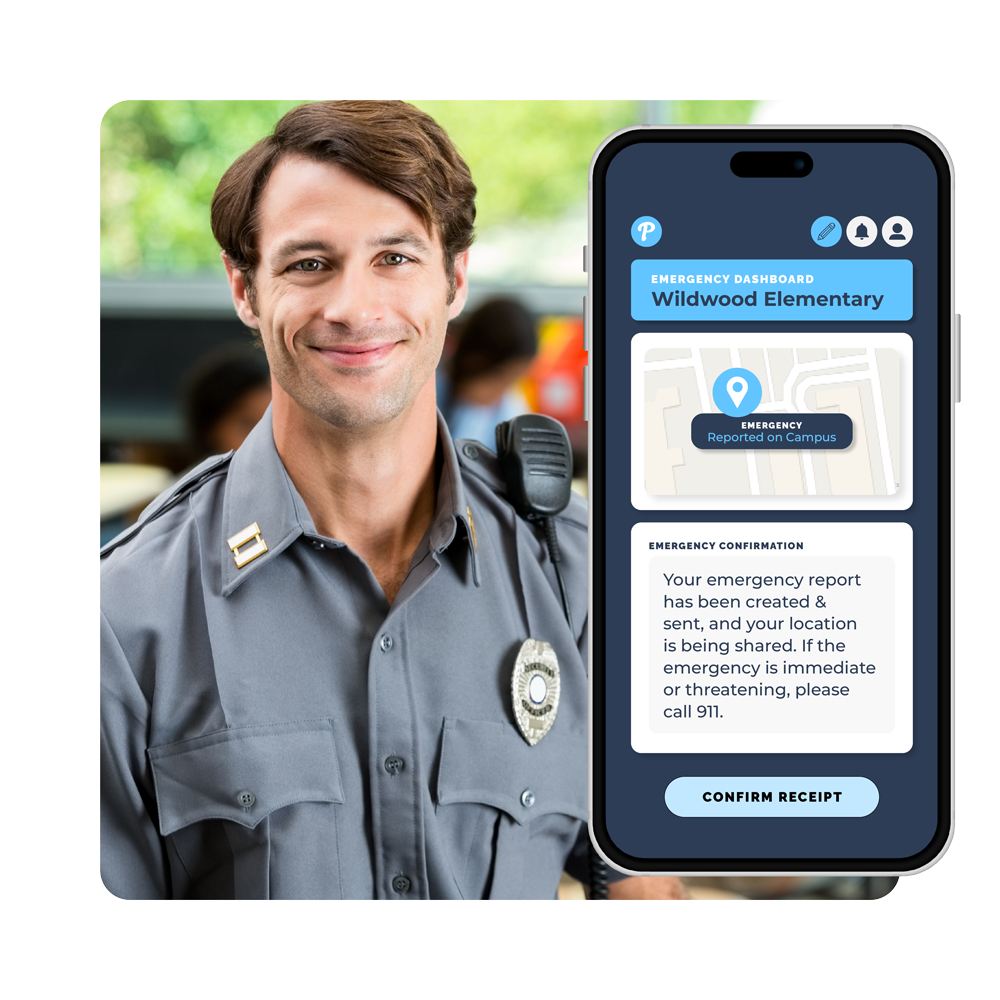Safe School Dismissal
Student safety should be the number one priority of every school. This includes a safe school dismissal process. Most schools face a chaotic and stressful ‘rush hour’ during dismissal, leading to dangerous congestion that can pose risks for students.
As the back-to-school season begins, prioritizing safety is essential. Schools must establish effective routines to ensure students can get home safely, with administration playing a key role. While parents are crucial to this process, schools are responsible for crafting comprehensive dismissal policies.
These policies should outline how students of all ages are dismissed, specify the roles and locations of adult supervisors, and provide guidance for parents and guardians to facilitate a smooth, stress-free pick-up.
Schools Need to Inform Parents
The school needs to inform parents about proper kid supervision as well as any available after-school services. The policy may also include how the parents can inform their schools of any changes in their kid’s routine.
Parents must be informed about who is picking up their child and the location of the pick-up. Therefore, dismissal policies should accommodate parents’ requests and suggestions, as they are most concerned about their children’s safety.
Additionally, schools should implement contingency plans for situations where the designated pick-up person is late or unable to arrive, ensuring a reliable solution for such scenarios.
School Dismissal Problems and Solutions
Policies should be developed collectively with parent-teacher organizations, the local community, and the school board, as well as other stakeholders. Engineers can recommend policies related to arrival and dismissal, which complement infrastructure modifications.
The group should convene to identify the issues, discuss solutions, and draft policy language. Parents should be notified about new policies via mailings, calls, meetings, e-mail, and/or social media.
The Primary Dismissal Concerns
During school dismissal, one of the primary concerns is road-related accidents and traffic congestion. The high volume of vehicles during pick-up and drop-off times at most schools often leads to severe traffic bottlenecks, creating hazardous conditions for everyone involved.
Students who walk or bike to school can face significant risks due to these traffic issues. They may avoid using crosswalks or sidewalks, increasing their vulnerability to accidents. Additionally, buses can obstruct the view of pedestrians and cyclists, creating unexpected dangers as drivers struggle to see them.
Traffic congestion further exacerbates the risks, especially during arrival and dismissal times. Motorists who display erratic or non-compliant behavior can contribute to hazardous conditions. For example, when cars are lined up, students may need to cross between vehicles, reducing their visibility and increasing the risk of accidents.
One effective strategy to mitigate these risks is the implementation of student valet services. These programs involve school staff or volunteers who assist students in entering or exiting vehicles, while parents remain in their cars. This approach not only enhances safety but also helps streamline the pick-up process, minimizing the need for students to navigate between parked cars.
Additional operational modifications can improve traffic flow, thus reducing congestion. Policies and programs that encourage walking, bicycling, busing, and carpooling will also reduce congestion and improve safety at schools.
Traffic Congestion Solution

Traffic congestion can greatly compromise the safety of kids. It is, therefore, a must, to find solutions that can effectively reduce this concern. The most common solution to the problem of traffic congestion is to reduce the number of students taking private vehicles to school. Below are a few more possible answers to this dilemma.
Educating Parents
Parents need to stay informed about road safety issues that impact their children’s travel to and from school. It’s important to understand the risks associated with traffic violations, the transportation methods their children use, and how adhering to road rules can help reduce congestion and improve safety. Schools can provide this information through PTA newsletters or handouts. By being aware of these details, parents can be more cautious and contribute to a safer school environment for everyone.
Car pick-up lines
Implementing designated pick-up lines at schools can greatly alleviate traffic congestion during dismissal times. These organized pick-up areas streamline the process by directing vehicles to specific locations where students can be safely and efficiently collected.
Benefits of Designated Pick-Up Lines
- Reduced Congestion: With a structured system, fewer cars are circling the block or idling in front of the school. This streamlining of traffic helps to alleviate bottlenecks and reduce overall congestion during peak dismissal times.
- Improved Safety: Designated pick-up areas can be designed with student safety in mind, with clear pedestrian pathways and traffic controls. This reduces the likelihood of accidents and ensures that students are picked up in a secure environment.
- Efficient Dismissal Process: A well-organized pick-up system allows for a quicker and more orderly dismissal process. With specific areas and designated times, parents spend less time waiting in line, and students can be collected more promptly.
- Enhanced Communication: When parents are informed of specific pick-up procedures, it fosters better organization and reduces confusion. This coordination helps in creating a smoother dismissal experience for everyone involved.
- Minimized Disruption: Reducing the need for vehicles to enter or circle around the school premises minimizes disruptions to local traffic patterns, which can be beneficial for the broader community and not just the school.
- Environmental Impact: A more efficient pick-up system can lead to less idling and lower emissions, contributing positively to the environment by reducing the carbon footprint associated with school traffic.
In summary, designated pick-up lines at schools offer a practical solution to managing traffic congestion during dismissal times. By creating a structured, organized approach, schools can enhance safety,efficiency, and overall traffic flow, benefiting students, parents, and the surrounding community.
Parking and curbing zones

By clearly designating where vehicles can and cannot park, these measures prevent chaotic double-parking and blocking of traffic lanes. Extended pick-up areas help streamline the flow of cars, while temporary parking zones can accommodate more vehicles during peak times without disrupting traffic. No-parking zones ensure that critical areas remain unobstructed, reducing bottlenecks and improving overall traffic management. This organized approach enhances safety and efficiency, making school pick-up times smoother and more orderly.
Traffic line synchronization
This is a simple yet effective approach. Examining the existing traffic lights and then revising its timing in order to synchronize with the dismissal times of the schools in the proximity. Though, this measure needs coordination with the traffic authority within the location. It may also not be effective especially if the light’s timing isn’t the main source of the traffic congestion.
Encourage students to bike or walk to school
This will not only lessen congestion but will also provide environmental and health benefits. The school can establish programs promoting walking/ biking by enabling students to get rewards or points based on how frequently they walk or bike to school.
Encourage carpooling
Schools can also implement programs that can encourage parents to do carpooling. It may be in a way of adding incentive into carpool when the school creates a special express carpool lane. This allows participating drivers to get out of school premises much faster and more efficiently.
Instituting school busing program

This option is often viewed as somewhat cost-prohibited. Instituting this kind of program needs to be handled cautiously and must involve where and when busses would load and unload and whether or not it will consider school bus alerts. Using this option will be much more effective if the school administration conducts a survey asking parents their insights about the program.
Altering drop-off and pick-up rules
Schools can reduce congestion considerably by altering the times during which parents can drop off or pick up their kids or by staggering bell times. However, parents who have multiple children at the same school, yet different drop-off and pick-up times, may discourage these changes.
A related change would be to change or add drop-off and pick-up locations, encouraging alternative routes into and out of the school area so that drivers would not all congregate in one place. Instituting “valets” at drop-off locations, whereby school staff or volunteers escort students from car to school, can also expedite the drop-off process.
School Dismissal Software
School dismissal software offers a modern solution to the challenges of managing dismissal times and ensuring student safety. This technology addresses concerns about student whereabouts and their safe arrival home by providing real-time updates. Typically available as smartphone applications, dismissal software allows both parents and teachers to track students after school ends.
These applications integrate seamlessly with existing school dismissal procedures, enhancing security and efficiency. They often provide real-time location tracking, showing where students are within the school and notifying users when a student has boarded the bus or arrived at a designated drop-off point. By offering these features, dismissal software not only reassures parents but also helps schools manage the dismissal process more effectively. This technology ensures that students are accounted for at every stage of their journey, enhancing overall safety and streamlining communication between schools and families.
There is also other software such as  K-12 school software and a special software feature called geo-fence for school safety. Geo-fence uses GPS (Global Positioning System) and RFID (Radio Frequency Identification) to define particular geographical boundaries. Simply put, geo-fence is a sort of virtual barrier.
K-12 school software and a special software feature called geo-fence for school safety. Geo-fence uses GPS (Global Positioning System) and RFID (Radio Frequency Identification) to define particular geographical boundaries. Simply put, geo-fence is a sort of virtual barrier.
Incorporating geo-fencing into a particular program will allow administrators to create triggers and set them up so when another device enters or exits from the predetermined boundaries, an email alert or text message is sent to the dismissal administrative.

Prioritizing Safe School Dismissal Procedures
Students’ safety is imperative, especially in today’s world of uncertainties. Adults need to find a way to ensure that students of all ages can go back and forth to school safely. School should be a home away from home that provides kids with education and teaches values with the utmost care. But that care must not only be restricted within the four corners of the classroom but also translate during after-school hours and dismissal.
For more resources, sign up for our blog subscription today!



